|
Home Machine Tool Archive Machine-tools for Sale & Wanted Books Accessories Emco Unimat DB200 & SL1000 Lathes Unimat Home Page Emco Home Page Accessories Earliest Unimat - Photographs Page 1 and Page 2 Mk. 2 & 2A Photographs Mk. 2B Photographs SL1000/DB200 Photographs Early German Unimat Catalogue |
||
|
Unimat Mk. 2B: although the major components continued unchanged this version it was the first to incorporate a means of aligning the headstock with the bed bars. Upon first assembly the base casting and headstock were jigged and a small vertical slot cut across the junction of their front faces. When the faces were correctly aligned (by using the tailstock method previously outlined) it was possible to insert into the slot a small "setting piece" - a disc washer given by the handbook as being 0.748" in diameter. However, one measured has been discovered to have an OD 0.734", and ID 0.333" and a thickness of 0.1577". Whilst the OD and ID are plain machined the flats were ground). |

|
This version was the first to incorporate a means of aligning the headstock with the bed bars. Upon first assembly the base casting and headstock were jigged and a small vertical slot cut across the junction of their front faces. When the faces were correctly aligned it was possible to insert into the slot a small "setting piece" - a disc washer given by the handbook as being 0.748" in diameter. |

|
Unimats of this age were given a more robust carriage assembly with the whole of the casting, including the front and back walls through which the way bars passed, noticeably thickened. |
||
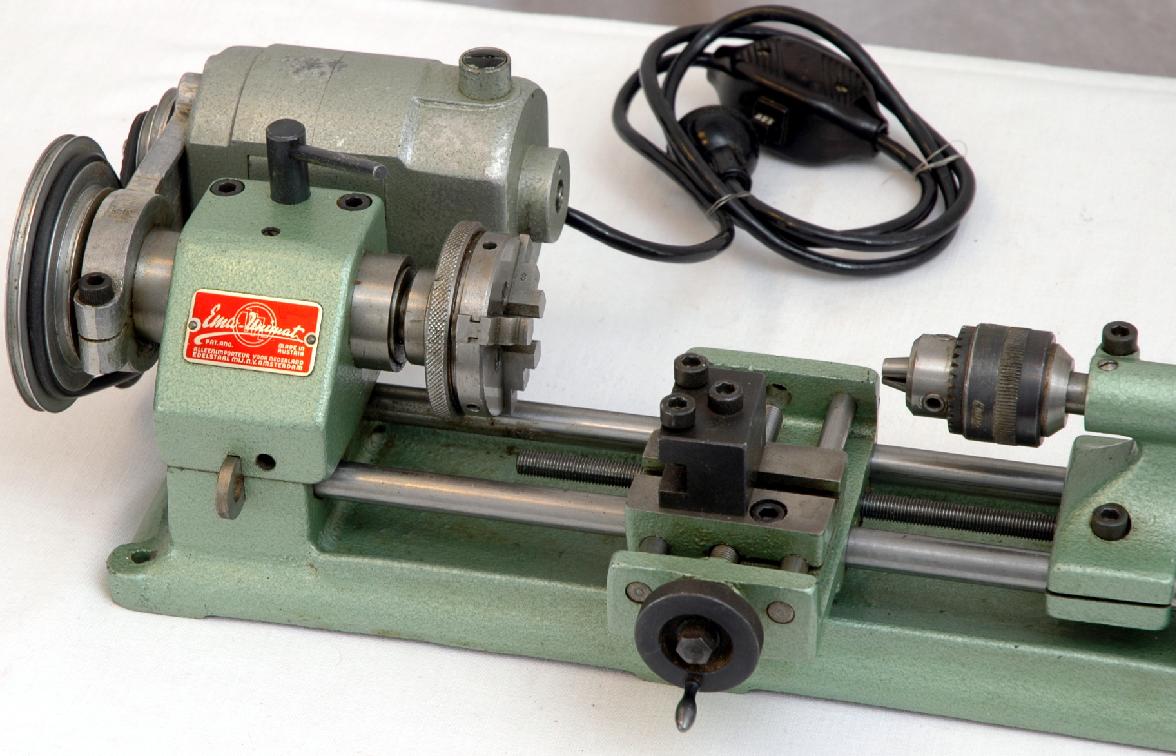

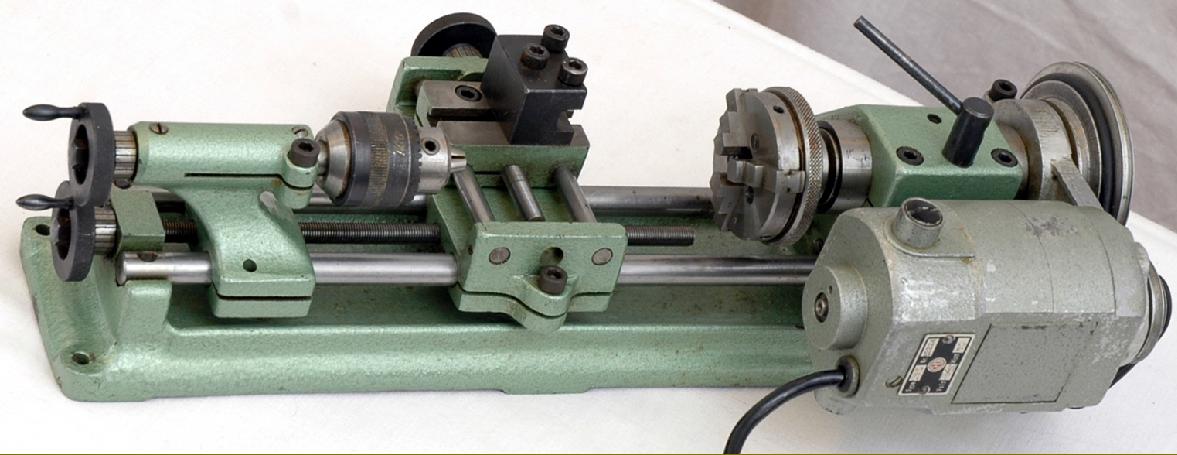
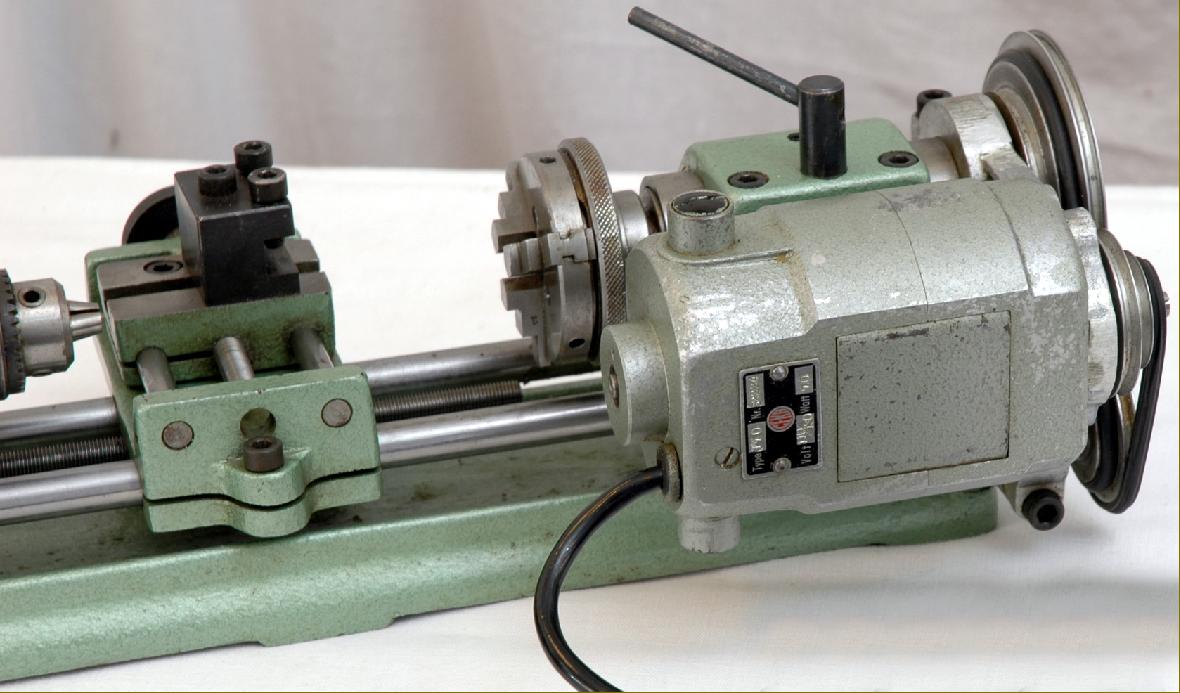
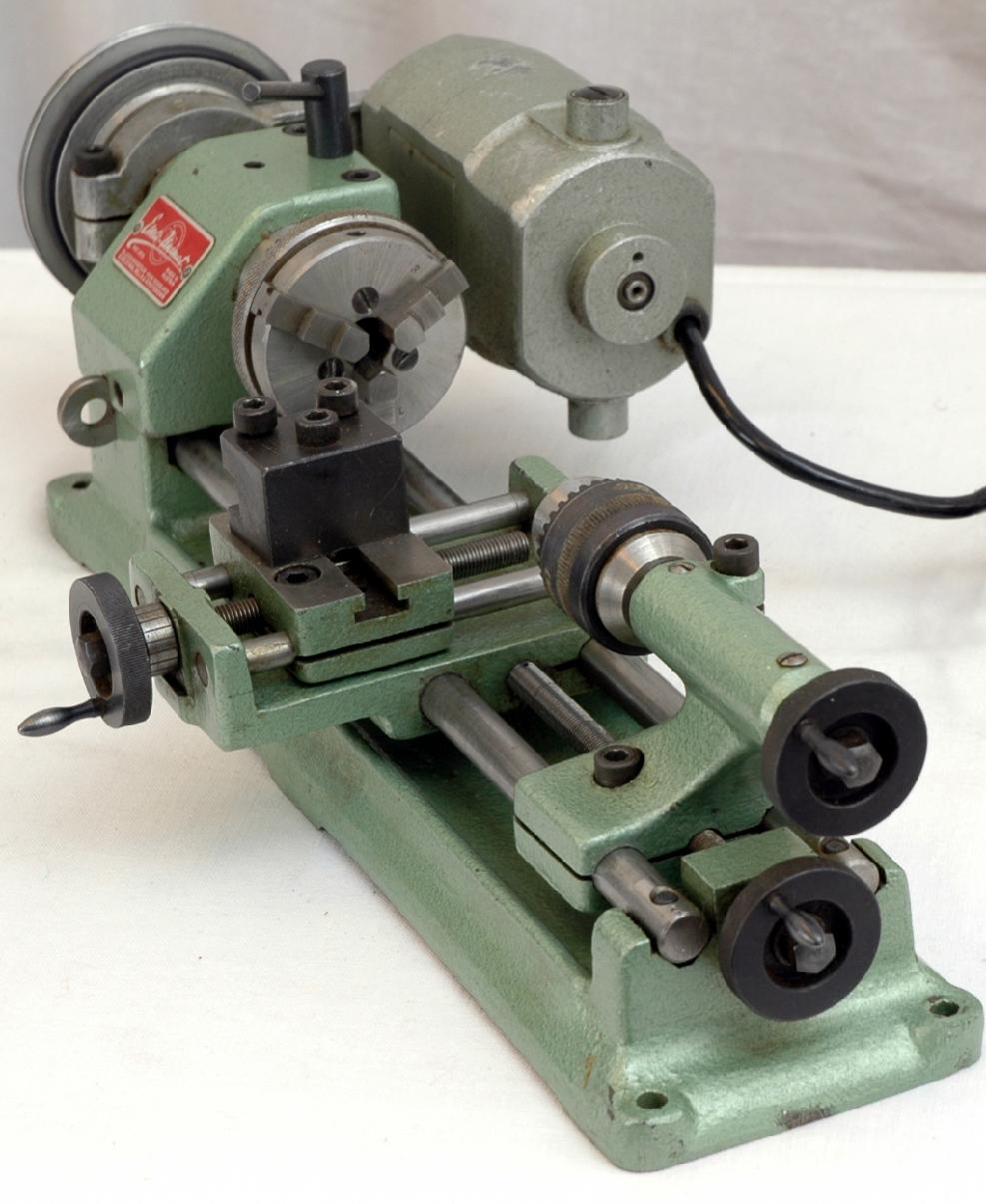

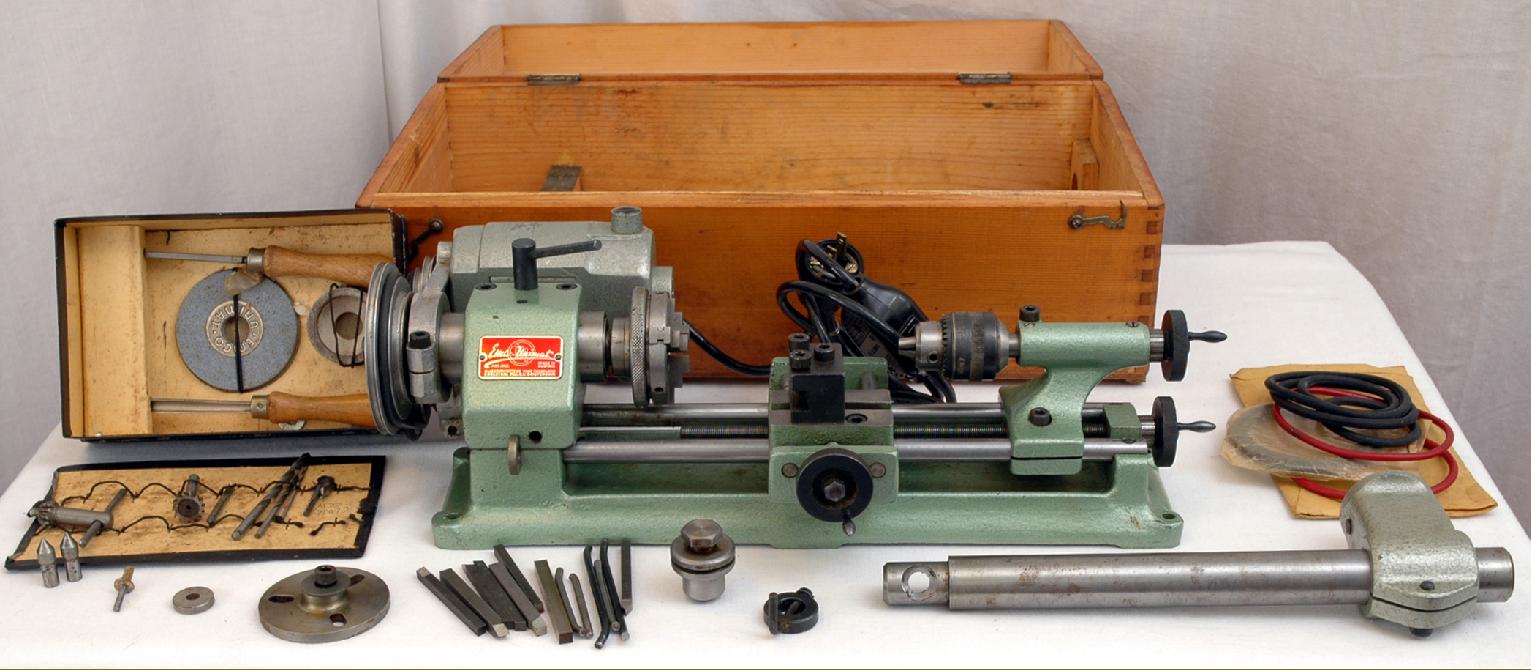



|
Note the repair to the tailstock - a weak point on these lathes where the to lock the spindle a slit in the casting is closed down by a set-screw |



|
Unimat Home Page Emco Home Page Accessories Earliest Unimat - Photographs Mk. 2 & 2A Photographs Mk. 2B Photographs SL1000/DB200 Photographs Home Machine Tool Archive Machine-tools for Sale & Wanted Books Accessories |
||